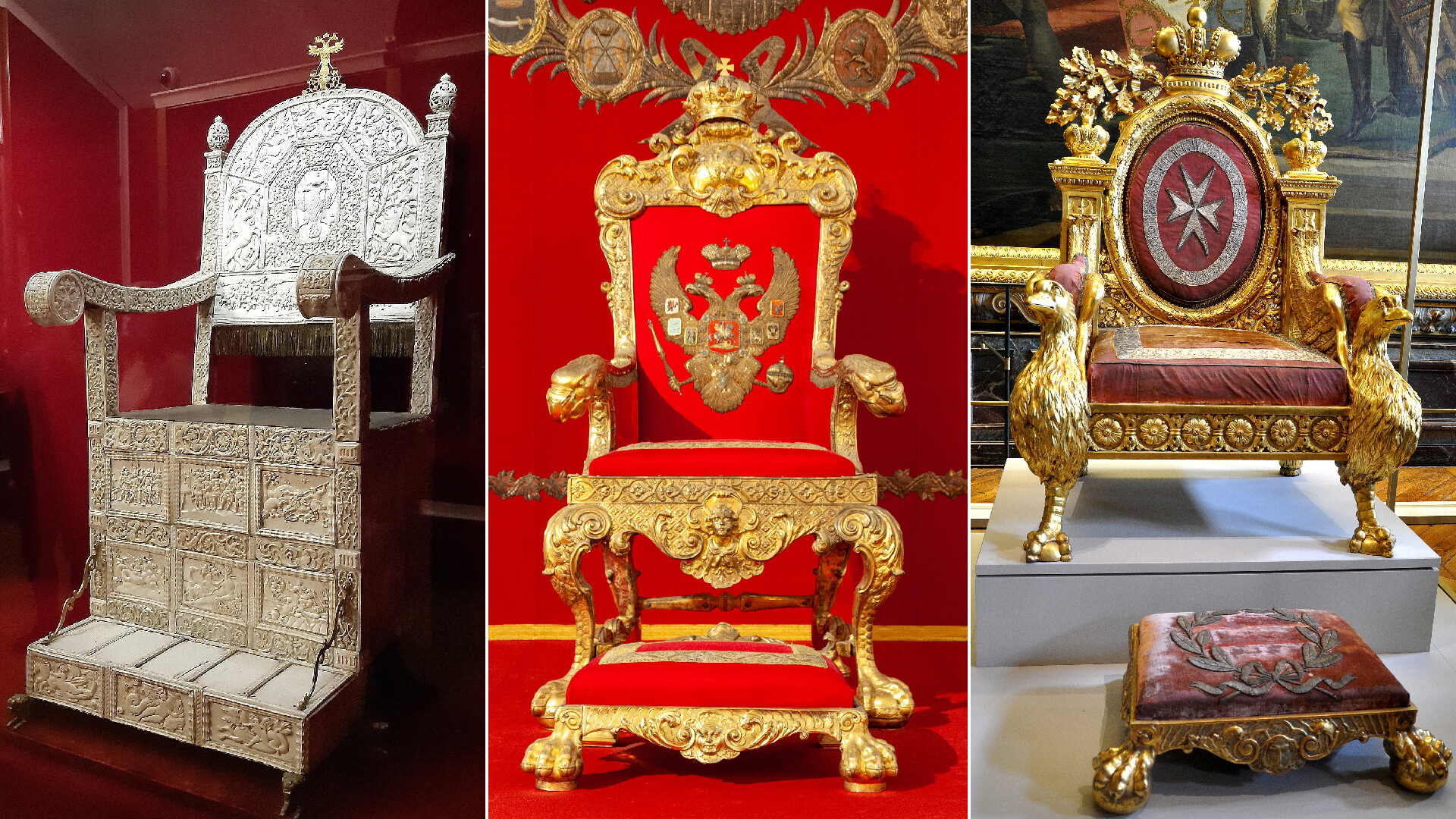
Thrones seem only to have appeared in Russia in the mid-16th century, when the Russian lands began to unite around Moscow and a single ruler. They were used during coronations and adorned the throne rooms of tsarist palaces. Each ruler wanted to create a unique throne for themselves. Below are a few that have survived to this day.
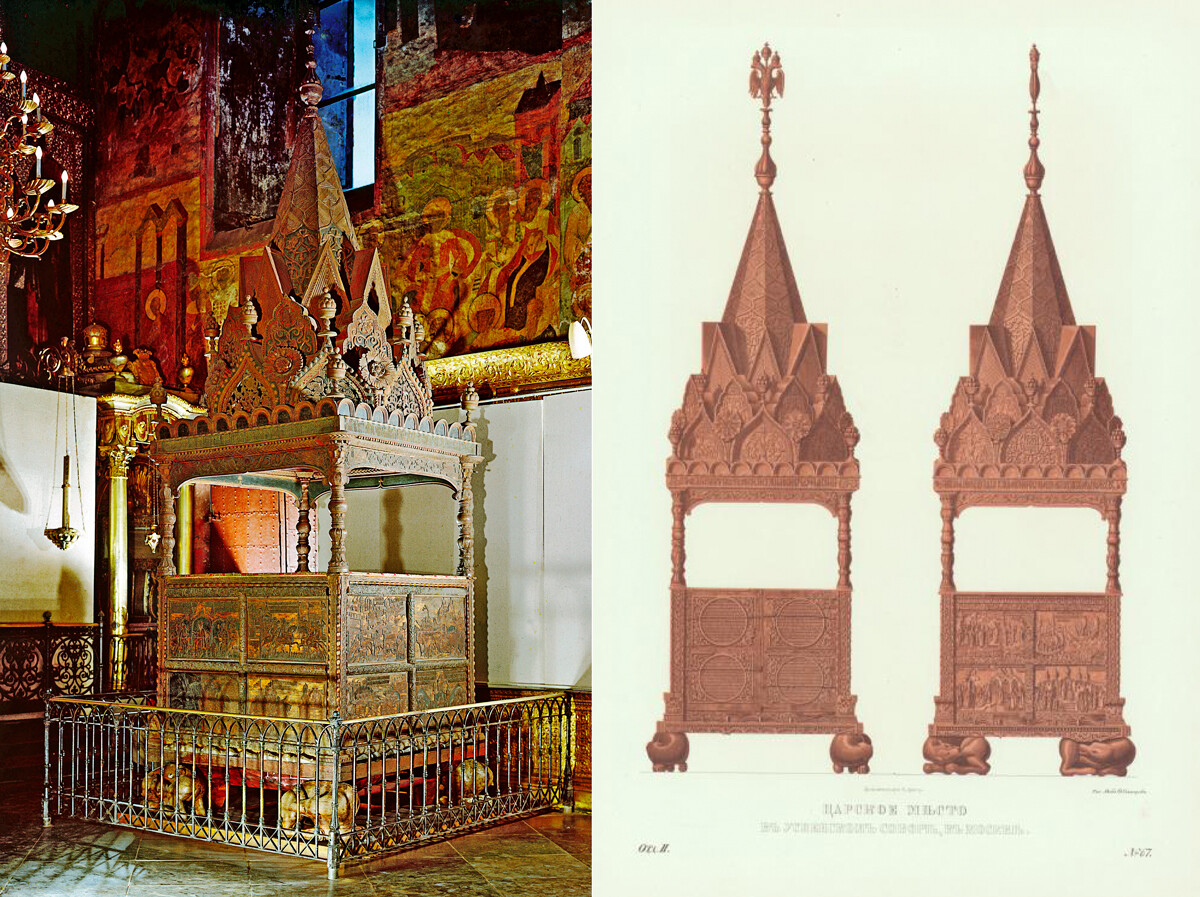
Tsar’s Seat of Ivan the Terrible
Sputnik; Public DomainIn Old Russia, the ‘tsar’s seat’ - a specially installed chair under a canopy in cathedrals where the tsar prayed - was known as the “throne”. The most famous and oldest of the surviving ones is the Throne of Monomakh in the Dormition Cathedral of the Moscow Kremlin. It dates back to 1551 and was commissioned by Ivan the Terrible himself. According to legend, the first such throne was sent to Russia by Byzantine Emperor Constantine Monomachos.
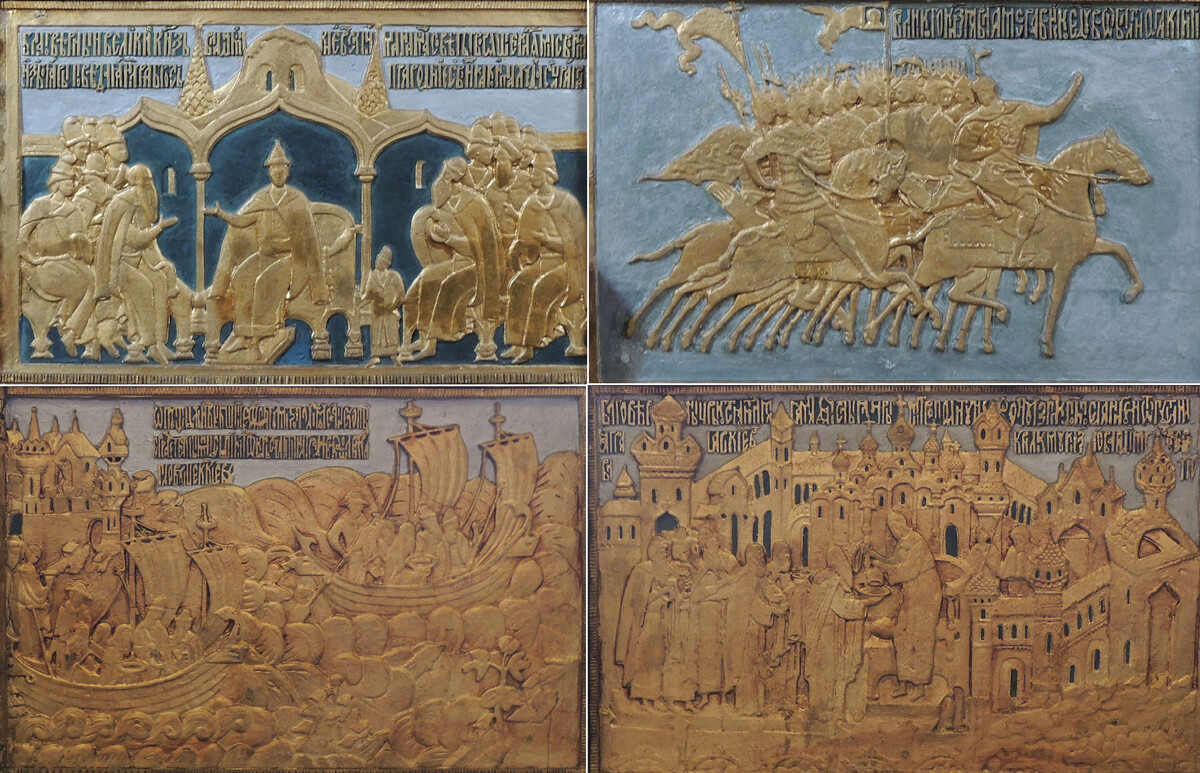
Throne's illustrations for Prince Vladimir's great military crusades
State Historical Museum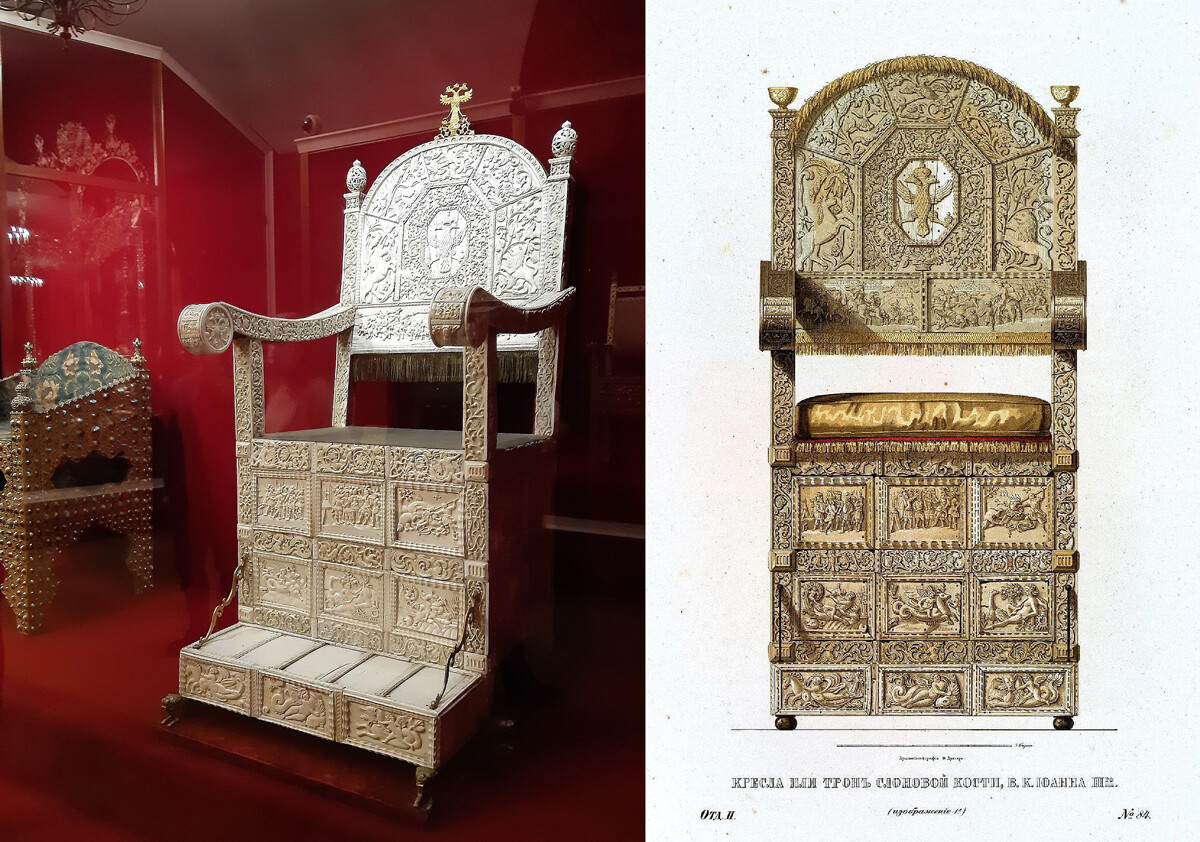
The wooden throne is covered with sheets of ivory, a reference to King Solomon’s throne in the Bible. The carved ivory panels depict scenes from the life of King David. A double-headed eagle adorns the back and the same eagle, but in gold, crowns the chair.
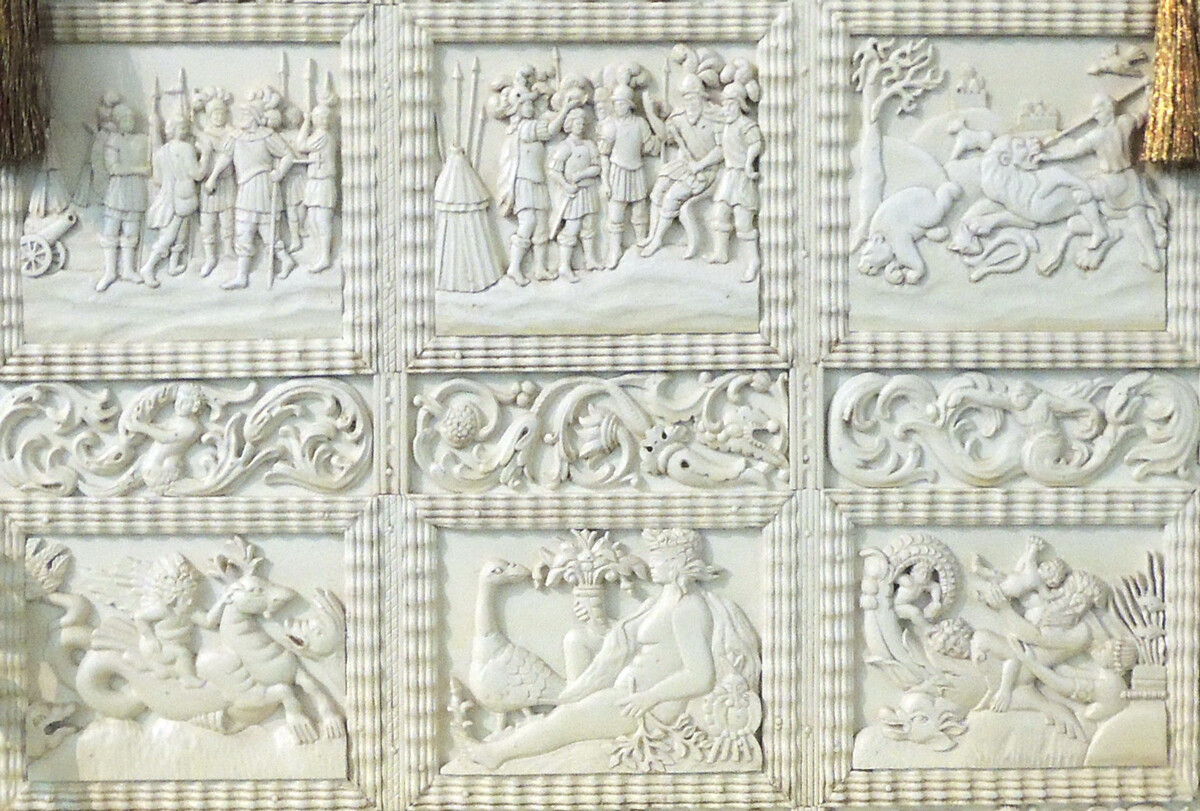
Details of the ivory throne
Wikipedia / ShakkoIt is believed that the throne belonged to Ivan the Terrible, but the first references to it appeared only several decades after his death - in the middle of the 17th century. The authorship and country of origin of the throne also remain in doubt. During the coronation of Nicholas II, the Dowager Empress Maria Feodorovna sat on it.
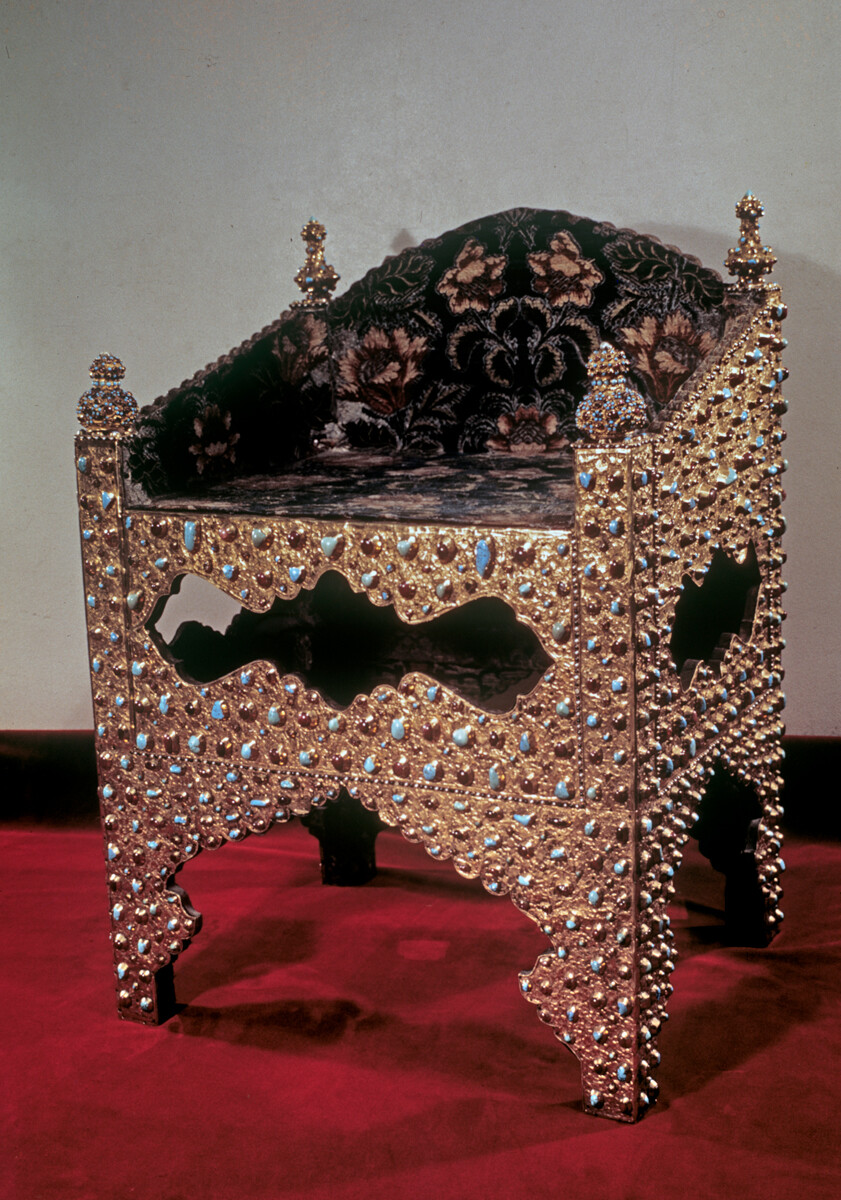
Throne of Boris Godunov in the Armoury Chamber
Moscow Kremlin Museums/SputnikThis throne was most probably a gift from Shah Abbas the Great of Persia to Tsar Boris Godunov, who reigned after the Rurik dynasty came to an end. This explains its Oriental style low back. Persian craftsmen richly adorned the throne with gold and studded it with an array of precious stones: turquoise gems, tourmalines and rubies. The woven velvet fabric is adorned with an oriental foliate pattern. It is considered to be one of the oldest surviving ceremonial thrones in Russia.
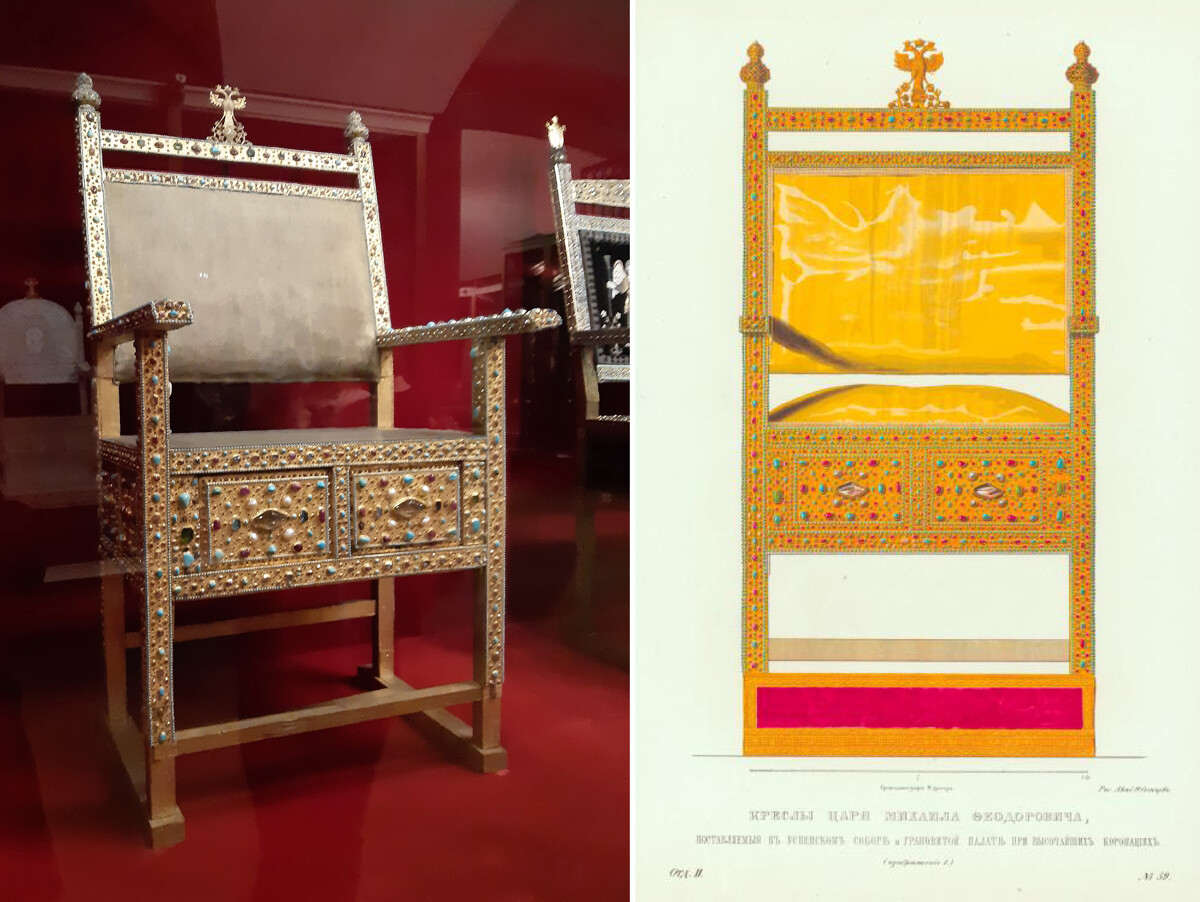
Throne of Mikhail Romanov
Wikipedia / Shakko; Public domainThis was another gift from Shah Abbas the Great - this time, to the first tsar of the Romanov Dynasty, Mikhail Fyodorovich (Michael of Russia). It was made by Persian craftsmen at the beginning of the 17th century. The wooden framework is covered with gold sheet and precious stones, including hundreds of rubies, tourmalines and sapphires, as well as pearls.
It is believed that Tsar Michael took the throne with him everywhere he went, including on expeditions (which is why parts of the gold and stones have been lost). For a long time after the tsar’s death, the throne stood in the Kremlin’s Dormition Cathedral and was used in coronation ceremonies (possibly as the seat for the tsarina). Furthermore, it was this throne that the last Russian tsar, Nicholas II, chose for his own coronation in 1896.

Throne of Aleksey Mikhaylovich
Mertsedin/Sputnik; Pavel Balabanov/SputnikThis sumptuous throne was made by Persian craftsmen at the end of the 17th century. Historians remain baffled as to how it ended up in the possession of Aleksey Mikhaylovich (Alexis of Russia). According to one theory it was a gift from the Shah of Persia, according to another it was presented by an Armenian trading company and according to yet another it was simply purchased by the Russian tsar. Whatever the case, following the acquisition of the throne, negotiations began to allow Persian merchants to carry out transit trade in Russia.
The sandalwood throne is covered with gold and silver sheets and decorated with almost a thousand diamonds. The back depicts the figures of the Apostle Peter and St. Nicholas. It was regarded as the most ornate of the tsarist thrones and was subsequently often used in coronation ceremonies alongside the throne of Mikhail Fyodorovich.
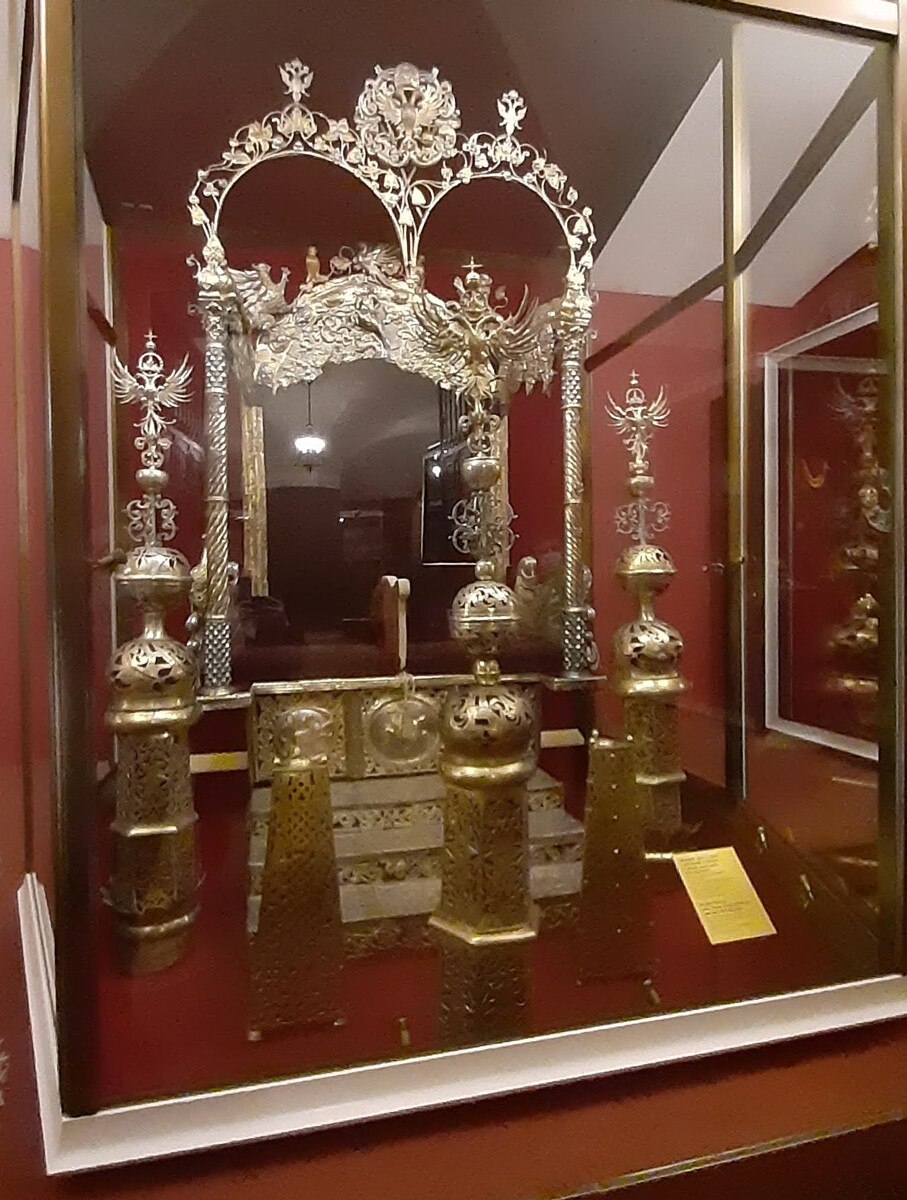
Double throne in the Armoury Chamber of Moscow Kremlin
Wikipedia / ShakkoThis unusual silver throne was made in 1682-83 to mark a unique occasion: For the first and only time in Russian history, two tsars jointly ascended the throne. They were both sons of Tsar Aleksey Mikhaylovich, but from different marriages. Each was backed by a powerful family which pressed the claims of their own heir to the throne. Ivan was five years older and had greater precedence, but he was a very sickly and weak child. And so, the energetic and competitive Peter (who eventually became Peter the Great) was made tsar jointly with him. In practice, Princess Sophia, the elder sister of the two underage tsars, ruled on their behalf. A special window was even cut in the back of the throne through which Sophia would whisper advice to the half-brothers.
The gilded throne is in Baroque style with decorative hammered metalwork. It is lavishly embellished with the symbols of authority - double-headed eagles, lions, unicorns, crowns and orbs with crosses. The seats are, meanwhile, upholstered in velvet.
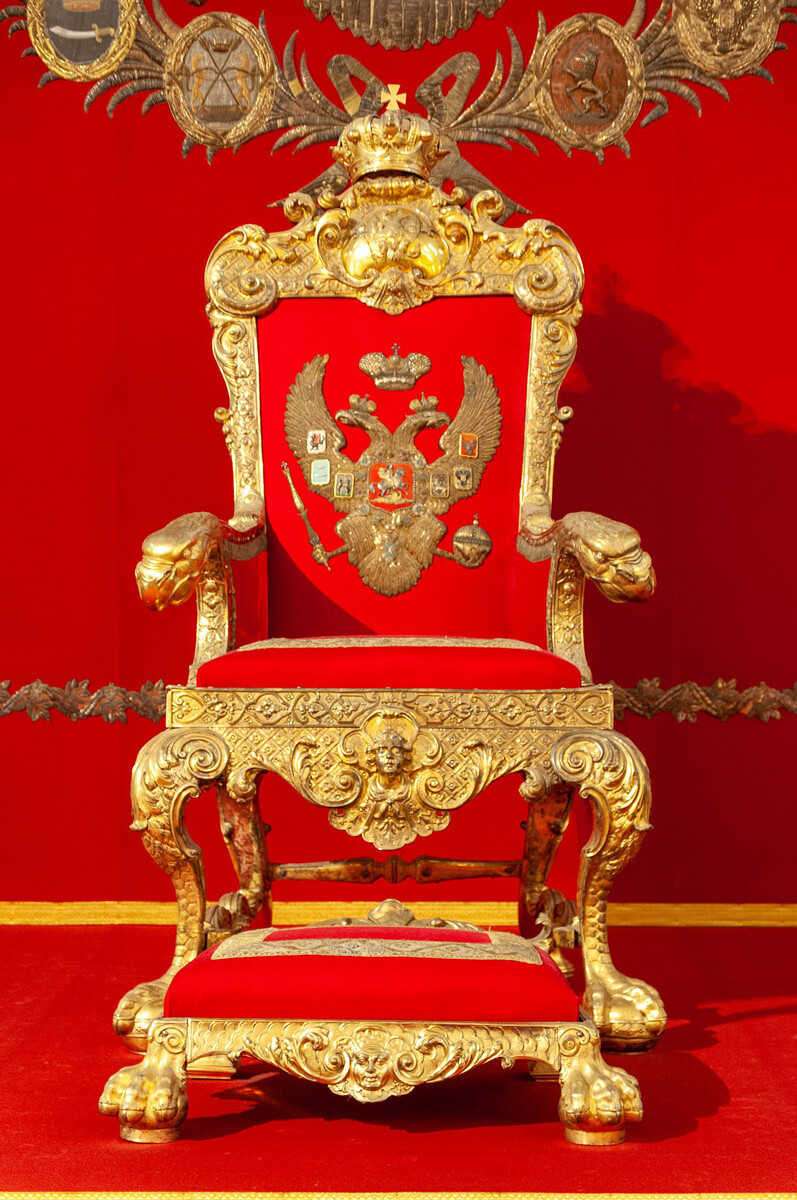
Throne belonged to Empress Anna Ioannovna
Don-vip (CC BY-SA 4.0)This throne was made in London by Nicholas Clausen in 1731 for Empress Anna Ioannovna (Anna of Russia). It stood in the Great Throne Room of the Winter Palace in St. Petersburg on a special plinth under a canopy. The back of the throne (as well as the space behind it) is adorned by an embroidered double-headed eagle.
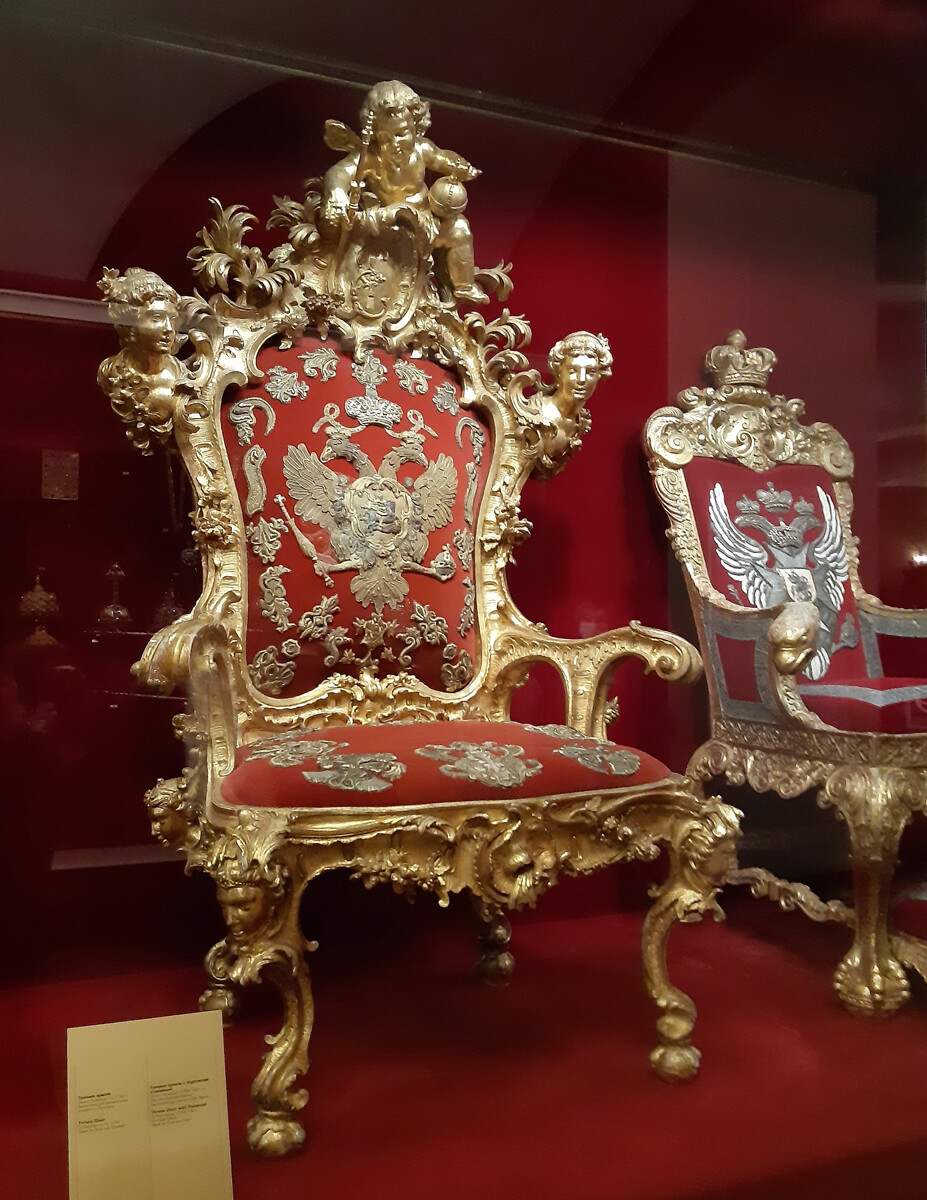
Throne of Elizabeth in the Armoury Chamber of Moscow Kremlin
Wikipedia / ShakkoEmpress Elizabeth Petrovna (Elizabeth of Russia) adored magnificence and lavish decoration and was very fond of the Baroque and Rococo styles. This oak throne of 1742 with its gilt carving and velvet upholstery belonged to her.
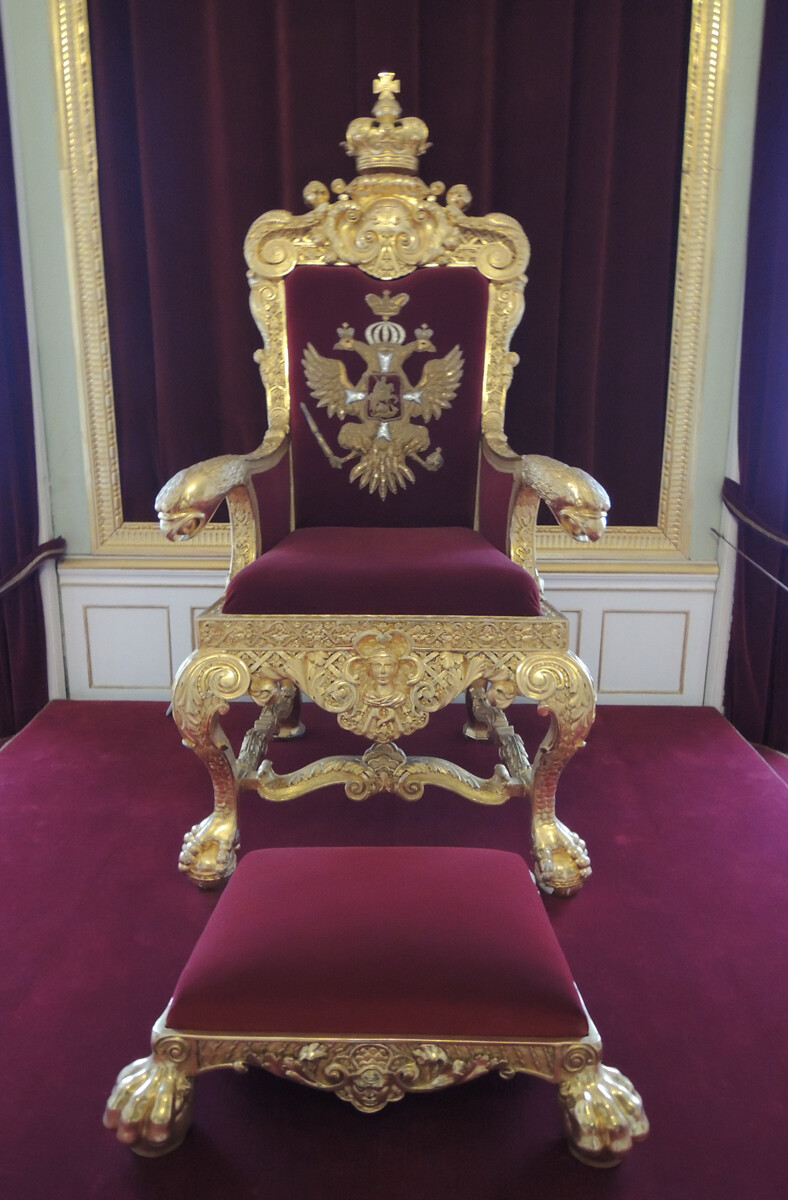
Throne of Paul I in Gatchina Palace
Wikipedia / ShakkoPaul I was very fond of ceremonies. Several of his thrones have survived to this day, distinctive examples having been installed in each of his residences. This throne, with its Maltese Cross and Maltese Crown design (Paul I was Grand Master of the Order of Malta, in addition to being Russian Emperor) stood in his favorite Gatchina Palace.
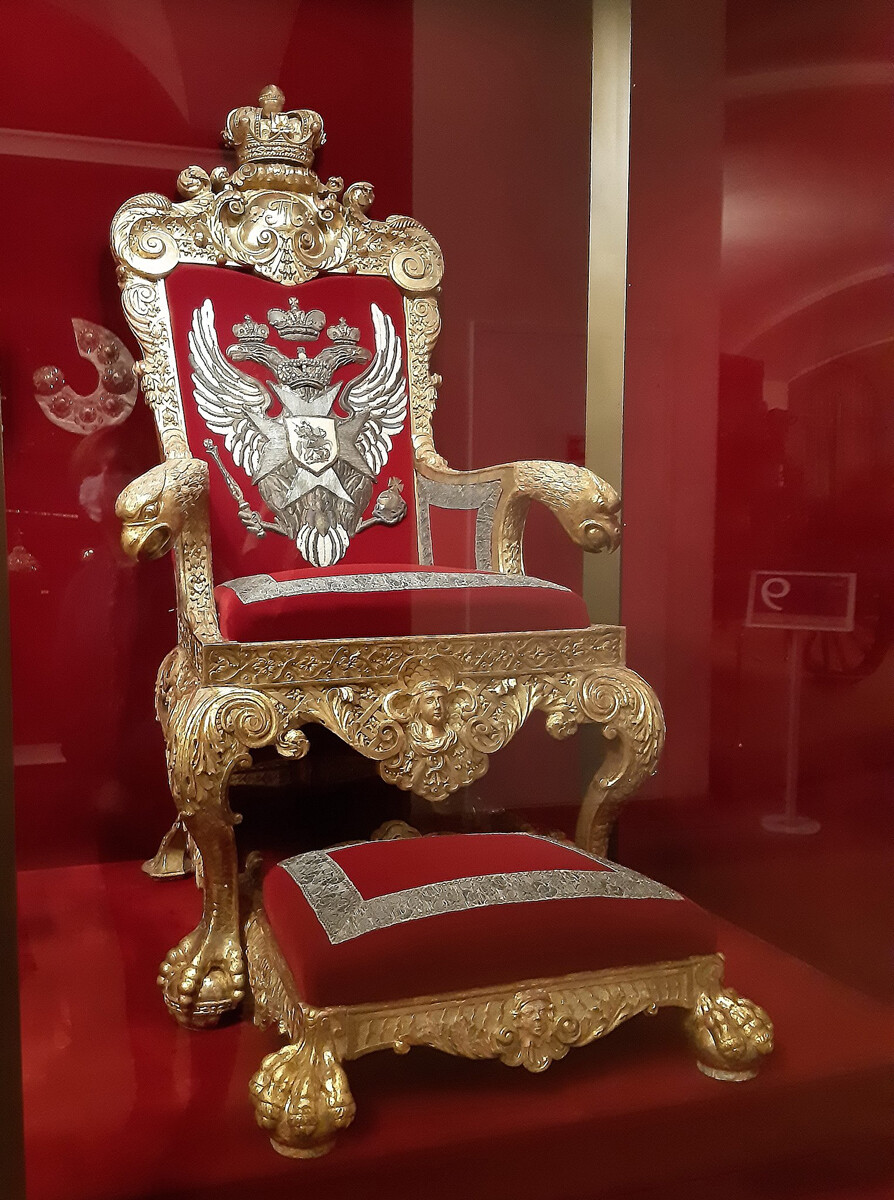
Throne of Paul I from the Winter Palace
Wikipedia / ShakkoIn the Winter Palace, Paul sat in state on another throne, designed by court architect Christian Meyer. Both thrones are actually regarded as copies of the Great Imperial Throne of 1731.
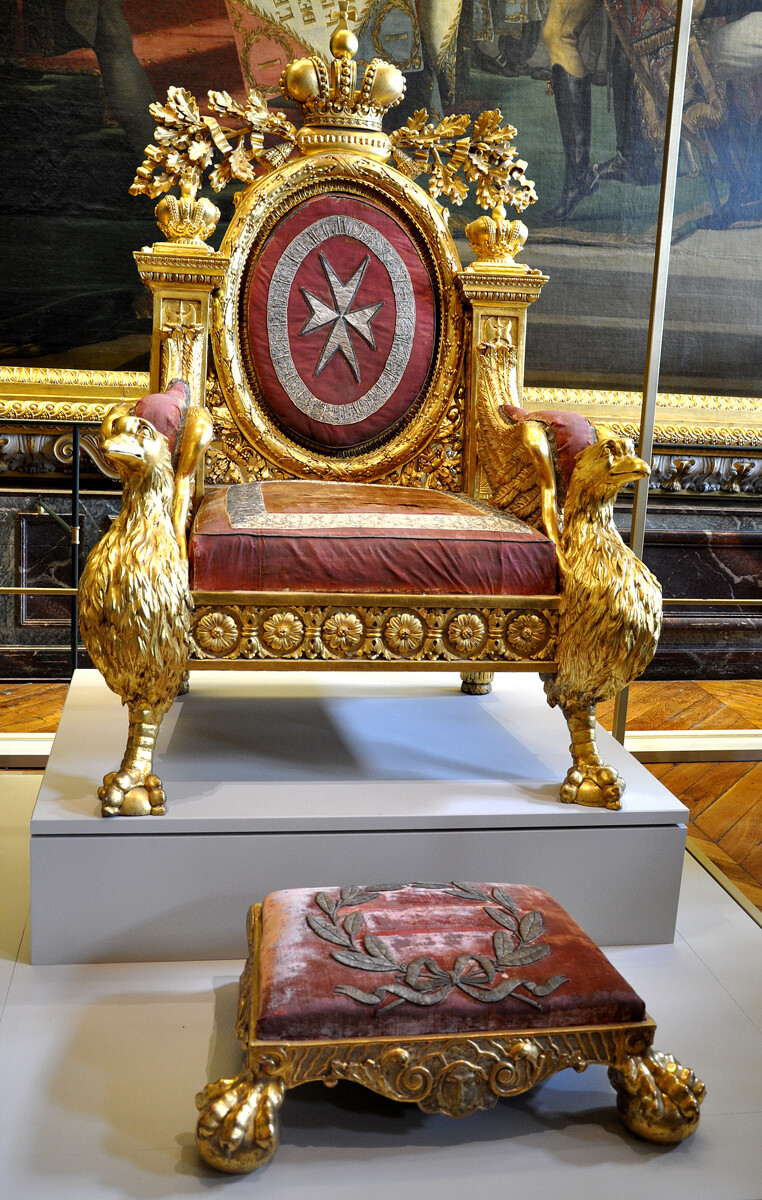
Ceremonial seat of Grand Master of the Order of Malta
Starus / Public DomainPaul also had a separate ruler’s seat dedicated exclusively to his status as Grand Master of the Order of Malta (which does not even have a double-headed eagle, although the legs are in the form of two eagles). This throne was made by architect Giacomo Quarenghi in 1798 for the Maltese Chapel of the Vorontsov Palace, which Paul had gifted to the Order of Malta.
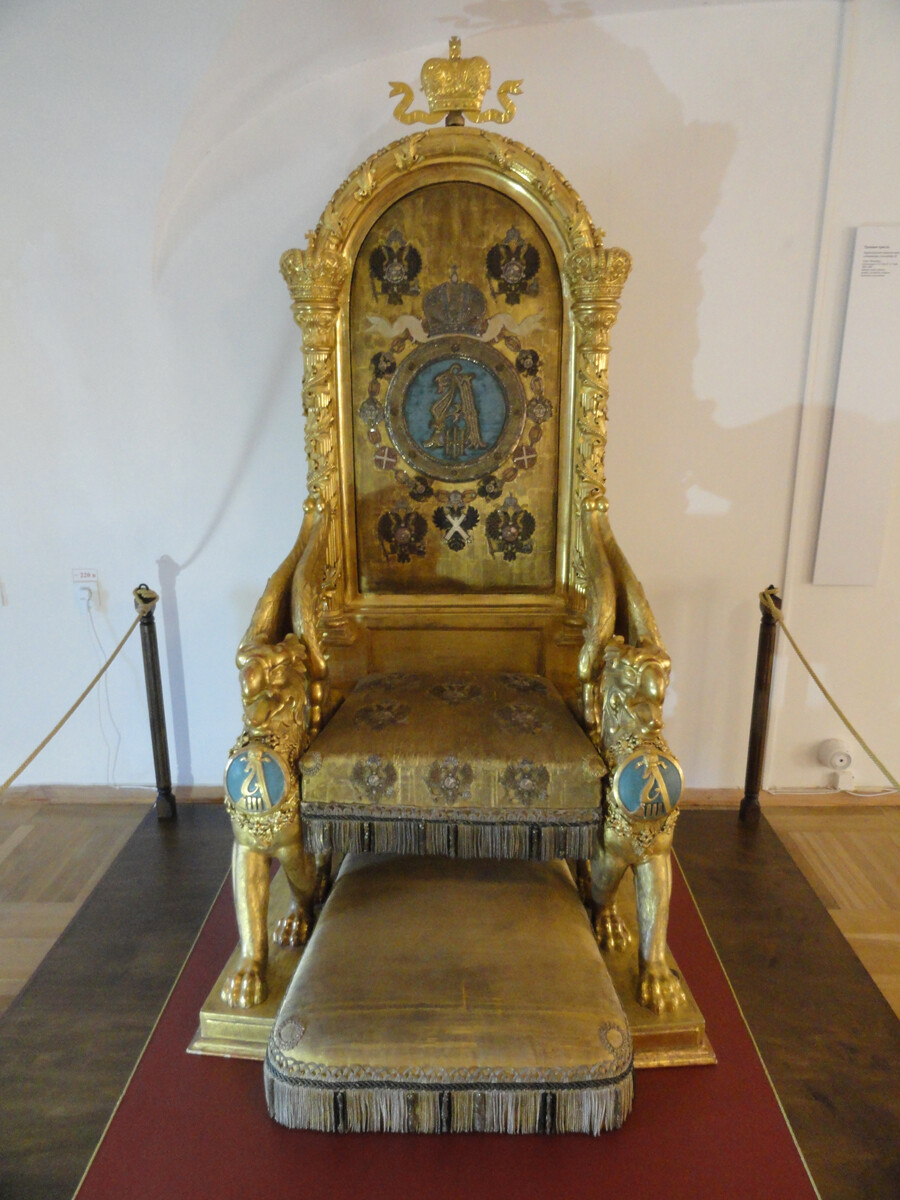
Throne of Alexander III
Damien (CC BY-SA 2.0)Alexander III’s predecessors during the 19th century had Classical-style European sovereign’s chairs, shorn of any extravagance (except perhaps for beautifully embroidered monograms on the backs). Alexander effectively brought in the fashion for the “Russian Style” and a return to the country’s historical roots, which is how this throne embroidered like the costume of an Old Russian tsar and bearing the monogram ‘A’ came to adorn the throne room of the Gatchina Palace.
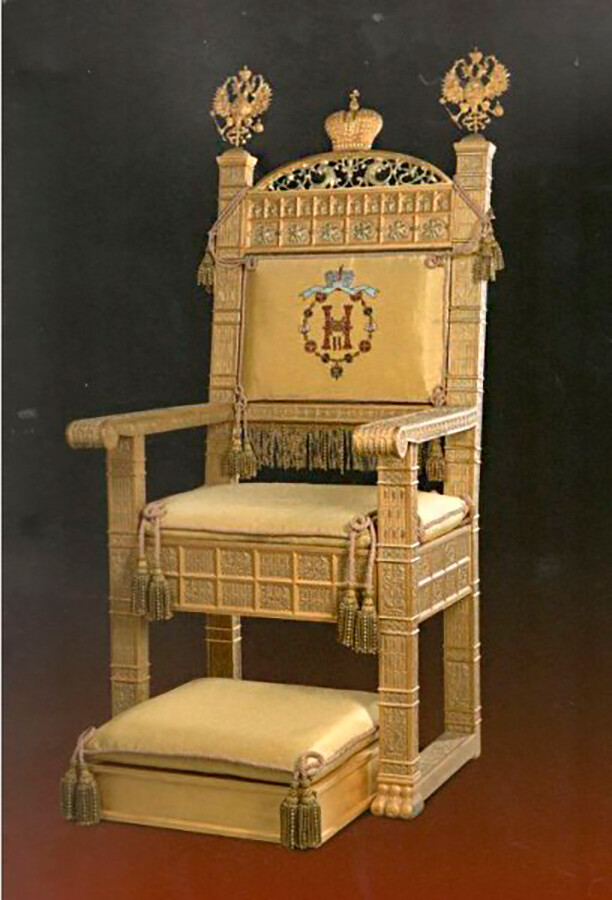
Throne of Nicholas II
Wikipedia / ShakkoHistorical continuity was important for Nicholas II (particularly since the Romanov Dynasty celebrated its 300th anniversary under his rule in 1913). Several ceremonial seats imitating the thrones of the Moscow tsars were made for him. For instance, one of them adorned the Hall of the Order of St. Andrew in the Great Kremlin Palace. For his own coronation, Nicholas chose the actual throne of the first of the Romanovs - Tsar Mikhail Fyodorovich.
Dear readers,
Our website and social media accounts are under threat of being restricted or banned, due to the current circumstances. So, to keep up with our latest content, simply do the following:
If using any of Russia Beyond's content, partly or in full, always provide an active hyperlink to the original material.
Subscribe
to our newsletter!
Get the week's best stories straight to your inbox